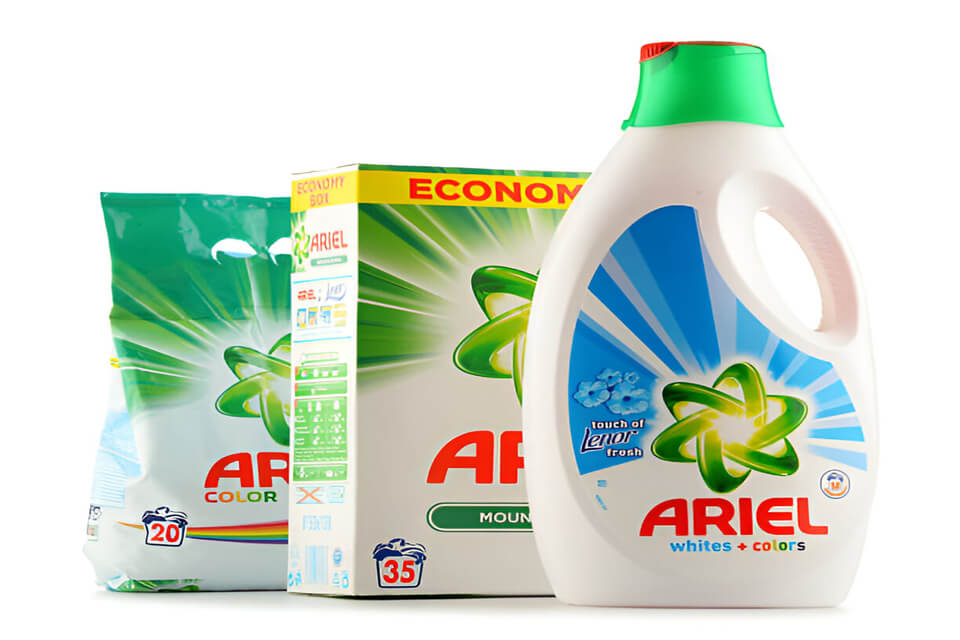Introduction
Imagine owning a piece of a company that generates consistent profits and shares its success with you through a steady stream of dividend payments. Meet the crème de la crème of income investing: Dividend Aristocrats and Dividend Kings. These elite groups of stocks have raised their dividends for many consecutive years, providing a reliable source of passive income and a testament to their financial resilience. But what sets them apart, and how can you tap into their wealth-building potential? Discover the secrets of these dividend aristocrats and kings and learn how to harness their power for your investment success.
Introduction to Dividend Aristocrats and Dividend Kings
Definition and Significance of Dividend Investing
Dividend investing is a strategy that focuses on purchasing stocks that pay dividends regularly. This approach is significant as it provides investors with a steady income stream, which can benefit those in retirement or seeking passive income. In third-world countries and popular African countries like Nigeria and South Africa, dividend investing can serve as a hedge against economic instability and inflation.
What are Dividend Aristocrats and Dividend Kings?
Dividend Aristocrats and Dividend Kings are esteemed companies renowned for their consistent dividend growth. Dividend Aristocrats, comprising S&P 500 index members, have increased their dividends for at least 25 consecutive years, demonstrating a commitment to sharing profits with investors. Meanwhile, Dividend Kings have achieved an even more impressive feat, raising their dividends for 50 consecutive years or more. These companies are considered stalwarts of consistent dividend growth, offering investors a reliable income source and potential capital appreciation. Their dedication to dividend payments showcases financial resilience, making them attractive options for income-seeking investors and those seeking long-term wealth creation. By investing in these companies, investors can tap into a legacy of stability and growth.
Importance of Consistent Dividend Growth in an Investment Strategy
Consistent dividend growth is crucial in an investment strategy as it signifies a company’s financial health and stability. It also provides investors with growing income over time, which can help offset inflation and increase overall returns. For investors in developing regions like Africa, consistent dividend growth can be critical to wealth accumulation and financial security.
Understanding Dividend Aristocrats and Kings
Definition of Dividend Aristocrats
Dividend Aristocrats are elite members of the S&P 500 index, distinguished by their remarkable history of consistently increasing dividend payments. To be included in the prestigious S&P 500 Dividend Aristocrats Index, these companies must meet stringent criteria, including being a member of the S&P 500, increasing dividend payouts for at least 25 consecutive years, and demonstrating financial stability. This select group of companies is committed to sharing profits with investors, making them attractive options for those seeking reliable income and long-term growth. Their impressive track record earns them a coveted spot among the investing elite.
Criteria for Inclusion in the S&P 500 Dividend Aristocrats Index
- Minimum 25 years of consecutive dividend increases: Dividend Aristocrats are elite companies distinguished by a minimum of 25 years of consecutive dividend increases, typically extending to at least 50 years. This achievement underscores their financial resilience and commitment to rewarding shareholders. While a 25-year streak is impressive, Dividend Aristocrats far exceed this, showcasing unparalleled stability and reliability. Their long-term consistency makes them attractive to investors seeking dependable income and robust growth prospects.
- Inclusion in the S&P 500 index: Inclusion in the S&P 500 index is a prestigious benchmark for companies, reflecting market stability and influence. For Dividend Aristocrats—companies with 25+ consecutive years of dividend growth—this inclusion signifies financial robustness and consistent performance. These firms must meet market capitalization and liquidity criteria, ensuring only the most reliable and resilient companies are represented. Thus, being part of the S&P 500 reinforces their credibility and appeal to investors.
- Market capitalization of at least $3 billion: Dividend Aristocrats, known for their long-term dividend growth, must maintain a market capitalization of at least $3 billion to qualify. This requirement ensures these companies possess significant financial stability and investor confidence. It also reflects their ability to generate substantial revenue and sustain dividend payments. Consequently, this threshold helps investors identify and trust in robust, reliable firms committed to rewarding shareholders consistently over time.
- Average daily trading volume of at least $5 million: Dividend Aristocrats must have an average daily trading volume of at least $5 million to ensure liquidity and investor accessibility. This criterion guarantees that these stocks can be easily traded, reflecting market confidence and stability. High trading volume indicates strong investor interest and robust market activity, which is essential for maintaining consistent dividend payments. Consequently, this requirement helps affirm the reliability and attractiveness of Dividend Aristocrats for investors.
Examples of Well-Known Dividend Aristocrats
- Coca-Cola
- Procter & Gamble
- Johnson & Johnson

Definition of Dividend Kings
Dividend Kings are a rare and exceptional group of companies that have achieved an extraordinary milestone: increasing their dividend payouts for at least 50 consecutive years. This remarkable feature demonstrates constant dedication to sharing profits with investors and a steadfast commitment to financial discipline. Companies must navigate various market cycles, economic downturns, and industry disruptions while maintaining a consistent dividend growth trajectory to reach this elite status. Dividend Kings consolidate the essence of long-term stability, reliability, and growth, making them highly sought after by income investors and those seeking a legacy of financial excellence. Their impressive record earns them a revered position among the investing community.
Criteria for Inclusion in the Dividend Kings List
- Minimum 50 years of consecutive dividend increases: Dividend Kings boast an impressive record of at least 50 consecutive years of dividend increases. This remarkable milestone showcases their unwavering commitment to sharing profits with investors. These companies have consistently raised their dividend payouts through economic downturns and market fluctuations, demonstrating financial resilience and stability. This achievement earns them a revered status among income investors seeking reliable growth and a legacy of financial excellence.
- Typically not restricted to a specific index, unlike Dividend Aristocrats: Dividend Kings, unlike Dividend Aristocrats, are not confined to a specific index such as the S&P 500. These elite companies have increased their dividends annually for at least 50 consecutive years, showcasing stability and reliability. While Dividend Aristocrats focus on the S&P 500 index, Dividend Kings can belong to any index, broadening the scope for investors seeking consistent income from highly dependable sources.
Examples of Well-Known Dividend Kings
- 3M
- Lowe’s
- Colgate-Palmolive
Comparison Between Dividend Aristocrats and Dividend Kings
While both groups signify companies with strong dividend growth histories, here is how they are slightly different:
1. Dividend Growth Requirement: Dividend Kings have raised dividends for at least 50 consecutive years, whereas Dividend Aristocrats require a 25-year streak.
2. Index Affiliation: Dividend Aristocrats must be part of the S&P 500, while Dividend Kings can be from any index.
3. Number of Companies: There are fewer Dividend Kings than Dividend Aristocrats due to the longer dividend growth requirement.
4. Market Presence: Dividend Aristocrats are large, well-established companies in the S&P 500, whereas Dividend Kings can include smaller or mid-cap companies not in the S&P 500.
5. Investment Strategy: Both are popular among income-focused investors, but Dividend Kings offer a broader range of options due to their less restrictive index criteria.

Benefits of Investing in Dividend Aristocrats and Kings
Consistent and Growing Income
- Importance of Consistent Dividend Growth for Income Stability
Consistent dividend growth is crucial for income stability, making investing in Dividend Aristocrats and Kings an attractive strategy. These companies have a long history of increasing dividend payouts, with Aristocrats boasting 25+ years and Kings exceeding 50 years of consecutive growth. This reliability ensures a steady and growing income stream, providing investors with financial security and peace of mind.
During economic downturns, when market volatility can disrupt other income sources, these consistent dividends act as a cushion, helping investors maintain their financial stability. Moreover, growing dividends can help offset inflation’s impact, preserving purchasing power over time. By investing in Dividend Aristocrats and Kings, investors can benefit from the confidence and stability these resilient companies offer, ensuring a dependable source of income through various economic cycles.
- Historical Performance of Dividend Aristocrats and Kings
Historically, Dividend Aristocrats and Kings have consistently outperformed the broader market, delivering superior returns with lower volatility. These elite groups comprise companies with long-standing records of consecutive dividend increases—25+ years for Aristocrats and 50+ years for Kings. Their impressive track record is particularly notable during market corrections, where their resilience and stability shine through. These companies demonstrate robust financial health and sound management practices by maintaining and growing dividends even in challenging economic times.
This dependable performance attracts investors seeking both growth and stability. The lower volatility associated with Dividend Aristocrats and Kings means reduced risk, making them a more attractive option for conservative investors. Their historical success underscores their ability to weather market fluctuations, providing reliable income and capital appreciation over the long term.
Lower Volatility and Downside Protection
- How Consistent Dividend Payers Tend to Be More Stable During Market Downturns
Companies that consistently pay dividends tend to exhibit more stability during market downturns. This stability stems from their strong financial health and reliable earnings, which enable them to maintain and grow dividend payouts even in challenging economic conditions. These companies often have robust business models, prudent management, and healthy cash flows, contributing to their resilience.
As a result, their stock prices are typically less volatile than non-dividend-paying firms. Investors are drawn to consistent dividend payers for their predictable income streams, which provide a cushion during turbulent times. This reliability instils confidence and can lead to a steadier demand for their shares, further reducing price volatility. Ultimately, the stability of consistent dividend payers makes them an attractive investment option, particularly during periods of market uncertainty.
- Examples of Performance During Market Corrections
During the 2008 financial crisis, Dividend Aristocrats demonstrated remarkable resilience compared to the broader market. While the S&P 500 experienced significant declines, Dividend Aristocrats showed less severe drops, effectively protecting investors’ capital during these tough times. This performance highlights their ability to weather economic downturns due to their strong financial health, stable earnings, and commitment to dividend growth. Companies like Procter & Gamble and Johnson & Johnson, both Dividend Aristocrats, maintained their dividend payments and even increased them during the crisis, showcasing their robust business models and financial stability. This ability to consistently reward shareholders even in adverse conditions underscores the value of investing in Dividend Aristocrats, providing security and confidence for investors during market corrections.
Strong Financial Health and Stability
- Characteristics of Companies That Consistently Grow Dividends
Companies that consistently grow dividends typically exhibit several key characteristics that enable them to maintain and increase their payouts over time. Firstly, they have robust earnings, reflecting strong operational performance and profitability. This financial strength ensures a steady cash flow, which is crucial for sustaining dividend payments. Secondly, these companies often maintain low debt levels, reducing financial risk and freeing up capital for dividend distributions rather than debt servicing. Thirdly, they operate with sustainable business models, which provide long-term growth and stability.
These models often include diversified revenue streams and a strong market position, allowing them to weather economic fluctuations. Together, these characteristics—robust earnings, low debt, and sustainable business models—ensure companies can continue paying and increasing dividends, making them attractive to income-focused investors seeking reliable and growing returns.
- Importance of Financial Strength and Solid Business Models
Financially strong companies with solid business models are better positioned to weather economic challenges and continue rewarding shareholders with dividends. These firms typically have robust earnings, ample cash reserves, and prudent debt management, which cushions during economic downturns. Their solid business models often include diversified revenue streams, strong market positions, and efficient operations, ensuring long-term sustainability and growth. This financial resilience allows them to maintain and even increase dividend payouts, providing consistent income to investors. During economic turbulence, such companies can manage costs effectively and seize growth opportunities, further strengthening their market position. By continuing to reward shareholders with reliable dividends, financially strong companies with solid business models instill confidence and attract long-term investors, reinforcing their stability and market value.
Analyzing Dividend Aristocrats and Kings
Criteria for Evaluation
When evaluating Dividend Aristocrats and Kings, several criteria are crucial:
- Dividend Yield and Payout Ratios
The dividend yield indicates how much a company pays in yearly dividends relative to its stock price. The payout ratio shows the proportion of earnings paid out as dividends, with lower ratios indicating sustainability.
- Earnings Growth and Cash Flow Sustainability
Strong earnings growth and sustainable cash flow are indicators of a company’s ability to continue paying and increasing dividends.
- Debt Levels and Financial Health
Low debt levels and strong financial health are essential for a company to maintain and grow its dividend payments.
Building a Portfolio of Dividend Aristocrats and Kings
Diversification Strategies
- Importance of Sector and Industry Diversification
Diversifying across different sectors and industries can reduce risk. For example, combining Dividend Aristocrats and Kings from various industries ensures that poor performance in one sector does not significantly impact overall portfolio performance.
- Examples of Diversified Portfolios of Dividend Aristocrats and Kings
A diversified portfolio might include companies like Johnson & Johnson (healthcare), Procter & Gamble (consumer goods), and 3M (industrial).
Balancing Growth and Income
- Combining High-Yield and High-Growth Dividend Stocks
Balancing high-yield and high-growth stocks can combine current income and future growth potential. High-yield stocks offer immediate income, while high-growth stocks promise higher future payouts.
- Strategies for Balancing Current Income with Future Growth Potential
Investors can combine stocks with different yield and growth characteristics to achieve a balanced portfolio that meets their income and growth objectives.
Regular Monitoring and Rebalancing
- Importance of Ongoing Assessment and Portfolio Adjustments
Regular monitoring and rebalancing are crucial to maintaining a balanced and diversified portfolio. This process involves evaluating the performance of each holding and making necessary adjustments to stay aligned with investment goals.
- Strategies for Maintaining a Balanced and Diversified Portfolio
Strategies include periodically reviewing dividend yields, payout ratios, and financial health, as well as adjusting sectors and industries as needed.
Risk Management and Considerations
Potential Risks and Challenges
- Risks of Over-Reliance on Dividend Income
Over-relying on dividend income can be risky if companies face financial difficulties and reduce or eliminate dividends. It’s essential to have a diversified income strategy.
- Market Risks and Economic Downturns Affecting Dividend Payers
Economic downturns and market risks can impact dividend-paying companies. Diversifying across sectors and geographies can mitigate these risks.
Strategies for Risk Mitigation
- Diversification Across Sectors and Geographies
Diversifying investments across different sectors and geographic regions can reduce the impact of localized economic challenges and sector-specific risks.
- Setting Realistic Expectations and Having a Long-Term Perspective
Investors should set realistic expectations and maintain a long-term perspective, understanding that short-term market fluctuations are inevitable.
- Monitoring Financial Health and Sustainability of Dividend Payouts
Regularly monitoring the financial health and sustainability of dividend payouts ensures that investments remain secure and continue to provide returns.
Case Studies and Real-World Examples
Historical Performance Analysis
Performance of Dividend Aristocrats and Kings During Different Market Cycles
During various market cycles, Dividend Aristocrats and Kings have shown resilience and stability, often outperforming the broader market.
Examples of Companies That Have Consistently Grown Dividends Over Decades
Companies like Procter & Gamble and Johnson & Johnson have consistently grown their dividends for decades, highlighting their financial strength and stability.
Case Study: 3M (Dividend King)
3M, known for its diverse range of products from adhesives to healthcare solutions, exemplifies a Dividend King. With over 60 consecutive years of dividend increase history, 3M showcases remarkable financial strength and stability. Despite economic downturns, such as the 2008 financial crisis, 3M maintained its dividend growth, reflecting its robust business model and effective management. The company’s commitment to innovation and operational efficiency supports its long-term sustainability and consistent dividend payouts.
Case Study: Procter & Gamble (Dividend Aristocrat)
Procter & Gamble (P&G), a leading consumer goods company, represents a Dividend Aristocrat. For more than 25 years, P&G has consistently increased its dividends, demonstrating its financial strength and operational stability. The company’s broad product range and global market presence contribute to steady revenue and profitability. During economic challenges, including the 2008 financial crisis, P&G’s strong business model allowed it to continue rewarding shareholders with increased dividends, highlighting its resilience and commitment to long-term shareholder value.

Lessons Learned from Investing in Dividend Aristocrats and Kings
1. Long-Term Stability: Investing in companies like Procter & Gamble and Coca-Cola demonstrates that long-term stability is achievable. Both have maintained dividend growth through various economic cycles, proving that consistent performance and resilience are key to reliable income streams.
2. Financial Strength is Crucial: 3M’s ability to sustain dividend increases for over 60 years highlights the importance of strong financial health. Companies with robust earnings and low debt are better positioned to weather economic downturns and continue rewarding shareholders.
3. Diverse Business Models: The success of companies like Coca-Cola and P&G underscores the value of a diversified business model. Their extensive product portfolios and global reach contribute to revenue stability and sustained dividend payments.
4. Resilience During Downturns: Dividend Aristocrats and Kings, such as Procter & Gamble and 3M, have shown that maintaining and growing dividends during economic downturns is possible with a resilient business strategy and effective cost management.
5. Commitment to Shareholders: The consistent dividend growth of Dividend Aristocrats and Kings reflects a strong commitment to shareholder value. These companies prioritize returning value to investors, which can enhance investor confidence and attract long-term investment.
Frequently Asked Questions (FAQs)
1. What are Dividend Aristocrats and Dividend Kings?
Dividend Aristocrats are companies in the S&P 500 that have increased their dividends for at least 25 consecutive years, while Dividend Kings have done so for 50 years or more.
2. Why should I invest in Dividend Aristocrats and Kings?
Investing in these companies provides consistent and growing income, lower volatility, and strong financial health, making them reliable long-term investments.
3. How do Dividend Aristocrats and Kings perform during market downturns?
These companies tend to be more stable and less volatile during market downturns, often outperforming the broader market due to their strong financial health.
4. What criteria should I use to evaluate Dividend Aristocrats and Kings?
Key criteria include dividend yield, payout ratios, earnings growth, cash flow sustainability, and debt levels.
5. How can I build a diversified portfolio of Dividend Aristocrats and Kings?
Diversify across sectors and industries, balance high-yield and high-performing growth stocks, and regularly monitor and rebalance your portfolio.
Conclusion
Dividend Aristocrats and Dividend Kings stand out as pillars of financial stability and consistent income in the investment landscape. Their long histories of uninterrupted dividend growth reflect robust financial health and resilience and offer investors a dependable source of passive income. By understanding the criteria for these elite groups and recognizing the benefits of their stable dividend payments, investors can leverage their power to achieve long-term financial goals. Whether navigating market downturns or seeking reliable income streams, incorporating Dividend Aristocrats and Kings into your investment strategy can provide security and growth. Embrace the legacy of these dividend dynasties and position yourself for a prosperous investment journey with the confidence of proven, enduring success.



